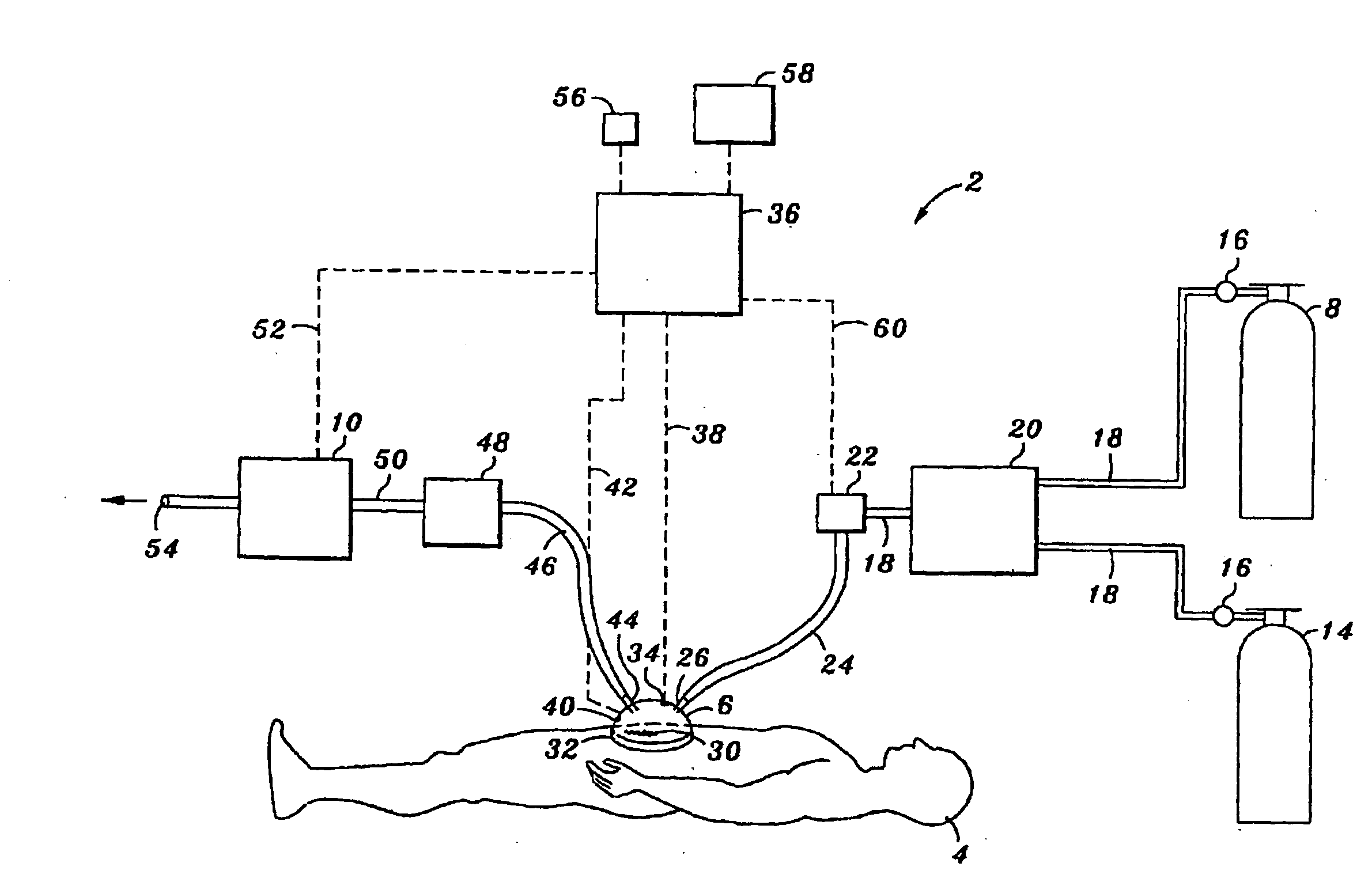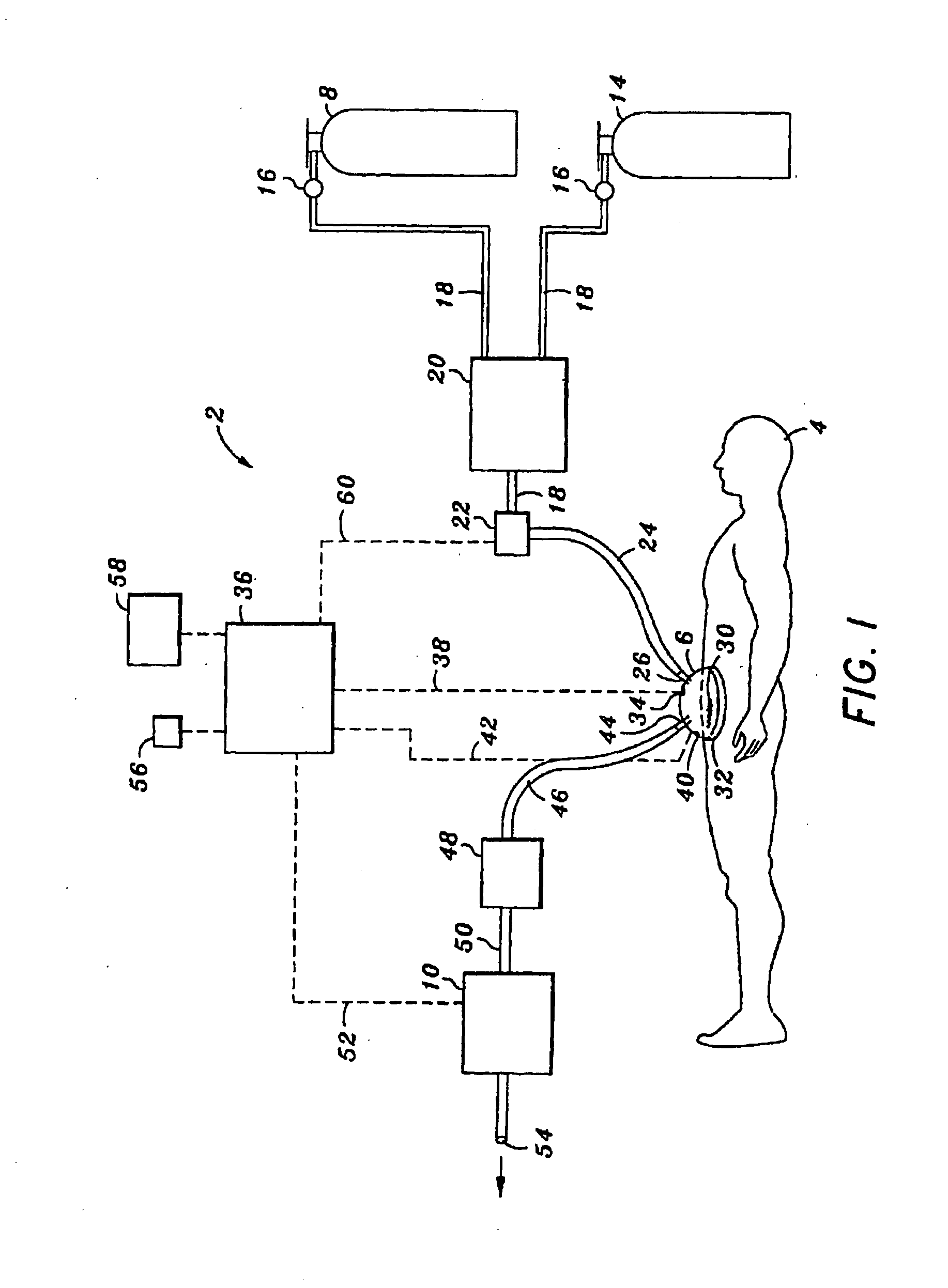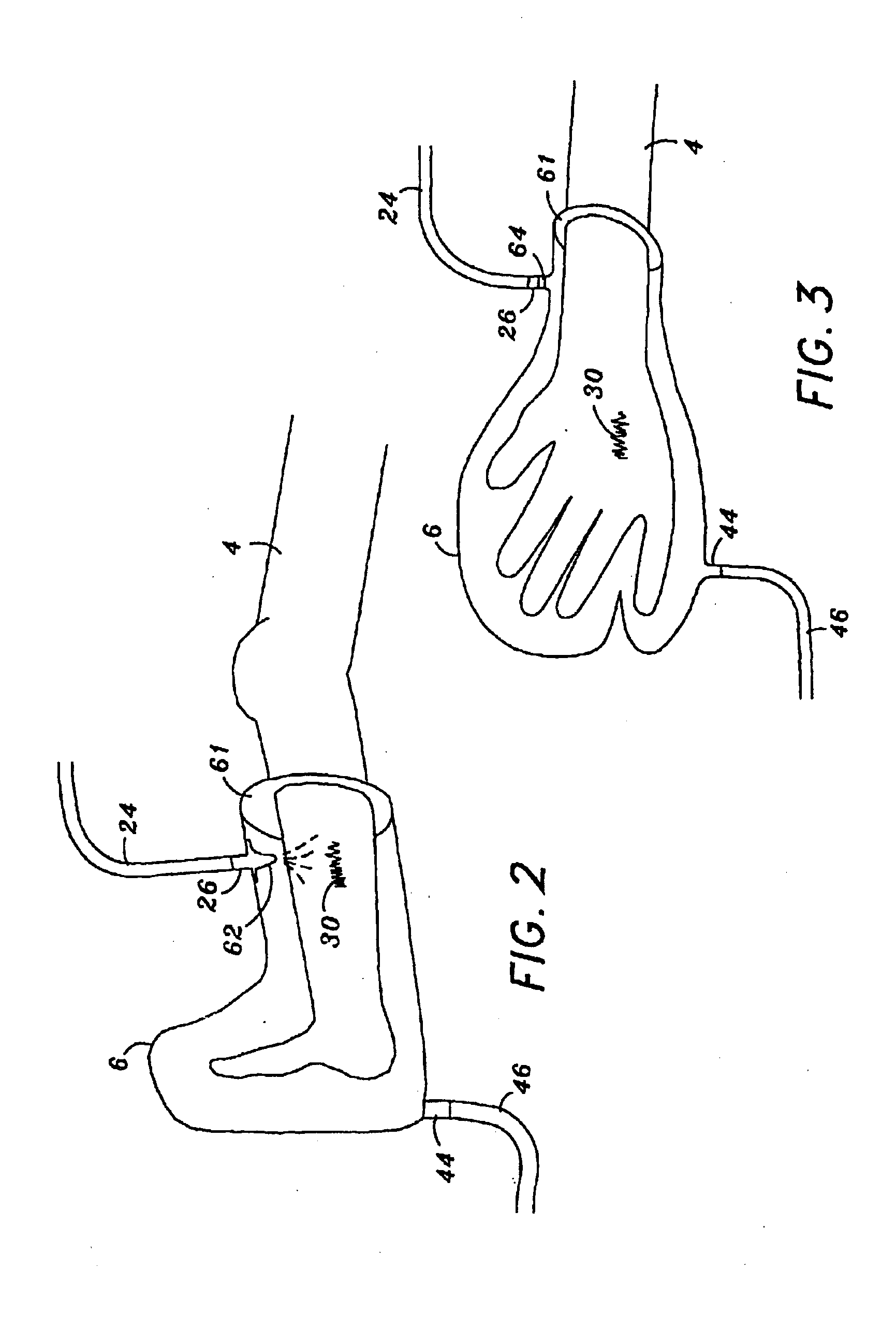Topical nitric oxide as a treatment of autoimmune diseases
a technology of autoimmune diseases and nitric oxide, which is applied in the field oftopical nitric oxide as a treatment of autoimmune diseases, can solve the problems of serious illness in an individual, lack of normal anti-parallel collagen type vii dimers, and more damage or discomfort in an individual, so as to alleviate autoimmune-mediated scarring of the skin surface, alleviate the loss of hair, and reduce the effect of alopecia areata
- Summary
- Abstract
- Description
- Claims
- Application Information
AI Technical Summary
Benefits of technology
Problems solved by technology
Method used
Image
Examples
experimental example 1
Uses and Applications of Nitric Oxide According to the Invention
[0097]FIG. 5 presents histological analysis of tissue blocks prepared on wound punch biopsies from animals in NO-treated and control groups. Samples from the control group show more advanced neutrophil infiltration and so a higher degree of inflammatory reaction. A lower level of neutrophil concentration is seen in wounds treated with gNO. Wounds treated with gNO also show a layer of granular tissue closing on the wound, but control wounds remain open for longer period of time. Overall, a healthier healing process is observed in the wounds treated with gNO. No toxic effects (cellular debris) can be seen in gNO treated group.
[0098]While the inflammatory response is integral to wound healing, an aberrant inflammatory response is believed to be one causal factor in chronic wounds and excess exudate. NO inhibits platelet aggregation, assists in maintaining vascular tone, and inhibits mast cell degranulation (Delledonne M, e...
experimental example 2
Safety Studies
[0104]In addition to the above study showing no toxicity of in vivo exposure of 200 ppm of nitric oxide gas in an animal model for an open wound, studies to confirm the viability of normal host cells exposed to gNO were performed on fibroblasts, endothelial cells, keratinocytes, alveolar epithelial cells, macrophages, and monocytes, in both flat plate and 3-D growth models for some studies. These experiments looked at viability, proliferation, migration, attachment, expression and tube formation in the appropriate models.
[0105]Fibroblast cells obtained from adult patients undergoing elective reconstructive surgery were cultured in Dulbeco's Modified Eagle's Medium (DMEM), supplemented with 10% fetal bovine serum (FBS) and antibiotic-antimycotic preparation and divided into ten 25 cm2 vented culture flasks (COSTAR). Four of these flasks (treated group) were exposed to 20 or 200 ppm humidified gNO inside a specialized NO incubation chamber at 37° C. for 24 and 48 hours. ...
experimental example 3
Autoimmune Wound Patient
[0112]A patient, a 22 year old female, was diagnosed with antiphospholipid antibody syndrome. Antiphospholipid antibody syndrome is an autoimmune disorder that mainly affects people under the age of 40. The disease causes the blood in the body to clot and is associated with a type of antibody that attacks blood platelets. Strokes, deep vein thrombosis (DVT), heart attacks, and pulmonary emboli are some of the manifestations of the disease. As a result of this syndrome, the patient had two DVT's and one pulmonary embolism.
[0113]Following repetitive injury to the deep venous system, the patient developed three areas of ulceration and secondary skin breakdown on the left shin area of the leg. The wound was colonized with a variety of organisms and at times had been clinically infected. The patient had been treated with numerous types of oral and IV antibiotics over several years. Many different types of dressings had been used to control the bacteria, including ...
PUM
 Login to View More
Login to View More Abstract
Description
Claims
Application Information
 Login to View More
Login to View More - R&D
- Intellectual Property
- Life Sciences
- Materials
- Tech Scout
- Unparalleled Data Quality
- Higher Quality Content
- 60% Fewer Hallucinations
Browse by: Latest US Patents, China's latest patents, Technical Efficacy Thesaurus, Application Domain, Technology Topic, Popular Technical Reports.
© 2025 PatSnap. All rights reserved.Legal|Privacy policy|Modern Slavery Act Transparency Statement|Sitemap|About US| Contact US: help@patsnap.com



